ASUS PQ321Q UltraHD Monitor Review: Living with a 31.5-inch 4K Desktop Display
by Chris Heinonen on July 23, 2013 9:01 AM ESTAfter I published the initial grayscale dE2000 results for the PQ321Q, there was a lot of feedback over the quality of the numbers. The simple fact in the end is that only two of the numbers rose above the visual threshold of a dE2000 of 3.0. Yes, I would really like to see an average dE2000 of 1.0 or less, but the point of dE2000 is to tell us if we can see an error or not. With the exception of pure white, and even then just barely, the PQ321Q should look incredibly neutral without any calibration done to the grayscale. The gamma also tracks the 2.2 target very well, which will help to make up for the lack of depth in the black level.
Of course we want to calibrate the PQ321Q to see what it can really do. If you are buying a $3,500 display, you can likely buy, or rent, calibration gear to get it dialed in if you really care about image quality. And if you do, you are in for a treat.
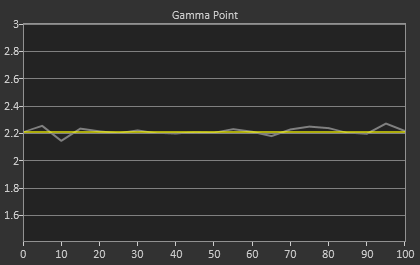
Post-calibration, our dE2000 average is now 0.56. We see every error below 2.0 except for 0, which really doesn’t matter anyway. There is no color shift, and the gamma tracks along 2.2 almost perfectly. Our contrast ratio has taken a small hit, down to 704:1 as it has to manipulate the peak white level to be more accurate. What we see now is a grayscale image that is basically flawless.
With color the PQ321Q has a pair of issues. The first issue is undersaturation in the gamut when it comes to red and blue. This also causes Magenta to be undersaturated, and brings out some high dE values for 100% saturations on those colors. We also see that green and red fall outside the sRGB gamut triangle. This too is unfortunate as it pushes yellows and oranges outside the gamut, and causes errors there. Our Cyan value is almost perfect, but every other color has some issue on the PQ321Q, at least at 100%.


The reason we don’t just stop with the gamut charts is because they only represent 6 colors out of millions. They might have a large error, but it is rare to see 100% saturated colors in real content like photos or movies. To test this we use the Colorchecker chart in CalMAN. We’ve always used the Gretag Macbeth chart, which has 24 common colors on it. SpectraCal has added a 96-sample chart to the newest version of CalMAN. This adds more skin tones and other colors, and will provide a more accurate indication of monitor performance. The color samples for it are taken from an XRite chart. I’m going to run them both for a few reviews to see how it goes, but more samples leads to better accuracy, and lets us pinpoint exactly where things are going bad.
On the PQ321Q the issues all come back to Red/Orange/Yellow shades. Skin tones are good, blues and purples and cyans are all decent, and blue-greens are nice as well. Those tones that fall outside of the triangle cause the dE2000 average to rise way, way up and show us where the issues are. Reds certainly have a good amount of pop on the ASUS, and there really isn’t a good way to bring them back in. This issue is the largest one with the ASUS PQ321Q, as that extra gamut can’t really be addressed.
Traditionally if you look at the standard gamut dE2000 chart and see a large error in red, that indicates you will have issues with skin tones and people looking sunburned, With the larger Color Checker chart, we see that this is not the case, and that skin tones are, for the most part, under control while orange and yellows are not. This extra data helps us realize where the ASUS will look correct and where it will fall short.

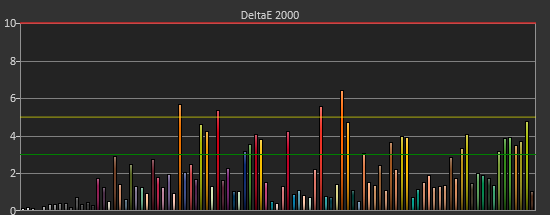
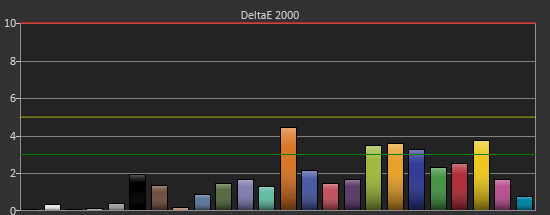
With the saturations charts, we see that the errors start small, like usual, and get larger as you move towards the edge of the gamut. Blue has the largest error, though we are less sensitive to blue than other colors. Cyan again remains great, and it would be nice if every color had the same performance as it does.
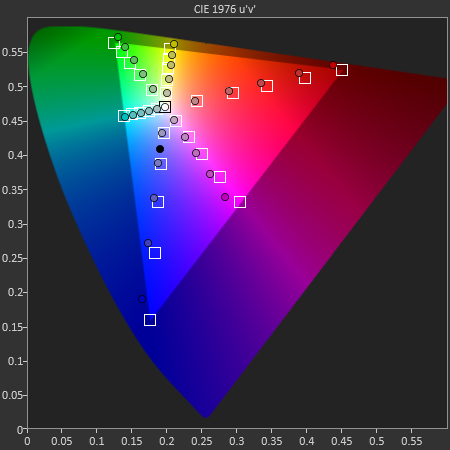
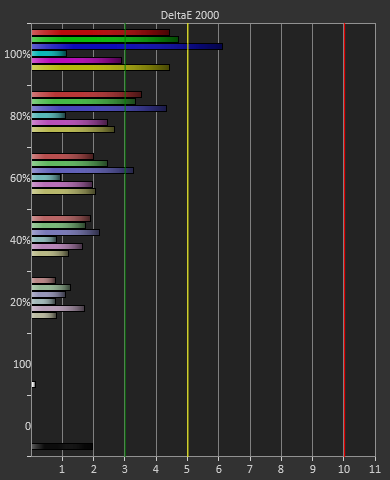
Post-calibration the ASUS is a bit of a mixed bag. We get great grayscale and gamma performance, but most people don’t just deal in black-and-white content. The color gamut provides a bit of an issue being both under-saturated and out-of-gamut at the same time. Looking through images the issue that pops out to me is the yellows. They really pop off the screen and look too bright. The color of reds looks slightly off, but yellow has the biggest issue that I can see with my eyes.


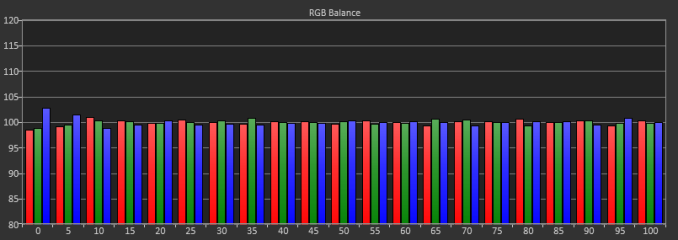
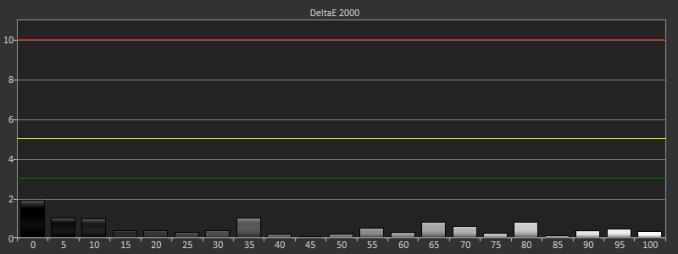











166 Comments
View All Comments
peterfares - Wednesday, July 24, 2013 - link
It's pretty easy to tell why they're getting 3200x1800 monitors. The super high DPI at that size and distance is unnecessary, but it has one HUGE advantage: You can use 200% scaling. That means things that aren't DPI-aware can run at standard DPI and then be doubled in width and height. This avoids the fuzzy effect like this article was complaining about when you use 150% on unsupported programs. With 200% scaling they'll look just like they do on a standard DPI display, not worse which is when happens when you use a decimal scaling factor.APassingMe - Tuesday, July 23, 2013 - link
I'm concerned since you mention the "low" contrast numbers. The last time I checked, any number over 100:1 was due to software enhancements and was equivalent to a higher quality contrast that racked lower due to not having much or any software enhancement meaning that the current contrast numbers thrown around are just a bunch of marketing jumble.So wouldn't it be better to just measure the contrast with a 3rd party tool? As the numbers provided from the manufacture are pretty much a product of fiction + the marketing team, just my two cents
APassingMe - Tuesday, July 23, 2013 - link
my bad, that's ranked* not rackedcheinonen - Tuesday, July 23, 2013 - link
The number on the specs page is the one that the manufacturer quotes. In the test results you can see what we actually found. Desktop LCD numbers far fall behind what is possible with plasma TVs and the best LCOS projectors, or ever rear array LCD TVs. 100:1 would be insanely low and a poor design. Desktop LCDs are capable of 1000:1, without any sort of trick.APassingMe - Tuesday, July 23, 2013 - link
I see, I could of been confusing the data with that from projectors; regardless I'm glad the test results are posted regardless as the definition of "contrast" can be a varying thing. Thanks for the swift responsefreedom4556 - Tuesday, July 23, 2013 - link
Yeah, you were definitely thinking of those "dynamic" contrast ratios that are complete BS. They are usually more in the 100,000:1 or 1,000,000: range, though. Completely unreasonable.sheh - Tuesday, July 23, 2013 - link
The official specs table lists the contrast as "800:01:00".cheinonen - Tuesday, July 23, 2013 - link
Great, I'll fix that since apparently Excel decided to change that to a time or something else. But it's fixed now.Streetwind - Tuesday, July 23, 2013 - link
31.5 inch is still too big for me. I'm not puttin anything over 24" on my desk. I've tried it, and I just can't like it.Unfortunately it seems that vendors are producing either tiny portable screens or gigantic TVs, and no real midsize desk monitors anymore. At least not outside the same old 1080p that we've been getting for the past 4 years.
cheinonen - Tuesday, July 23, 2013 - link
Well rumors are that Dell might be coming out with a 24" UHD display using a panel from LG. If that happens then I'll be happy to review that as well.